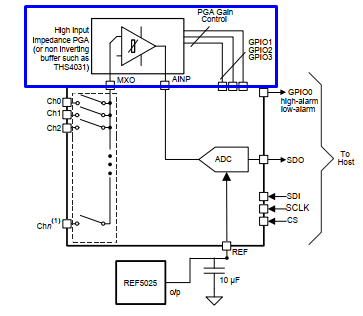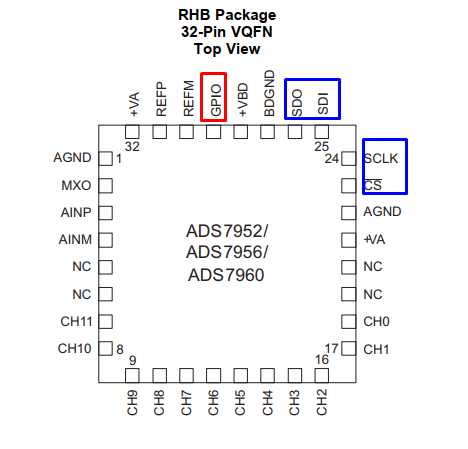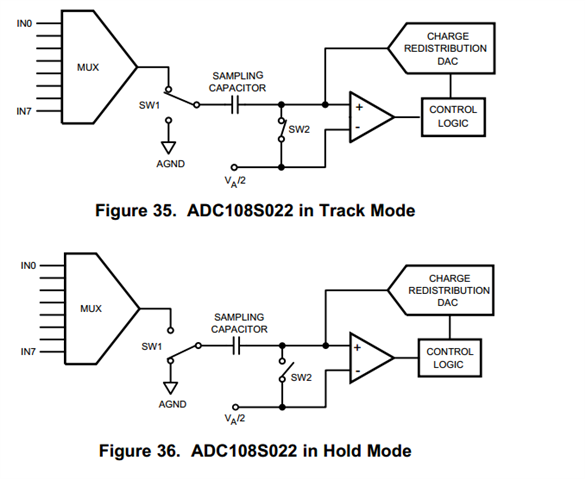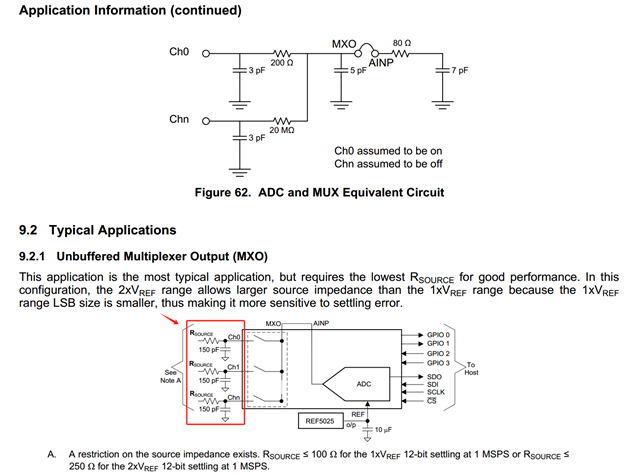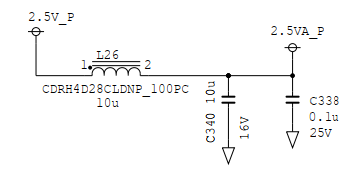Other Parts Discussed in Thread: THS4031, , ADS7956
Tool/software:
Hi team,
The current project requires an ADC with similar functionality to ADC108S022CIMTX/NOPB but with 10 channels. Are there any recommended ADC models that meet these requirements? Thank you.
Must ensure 10-bit resolution, 10 channels, SPI interface.


